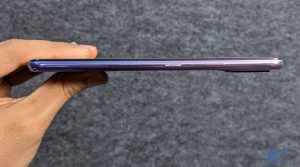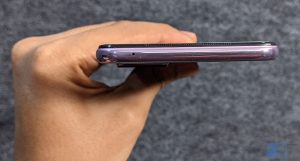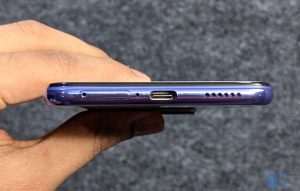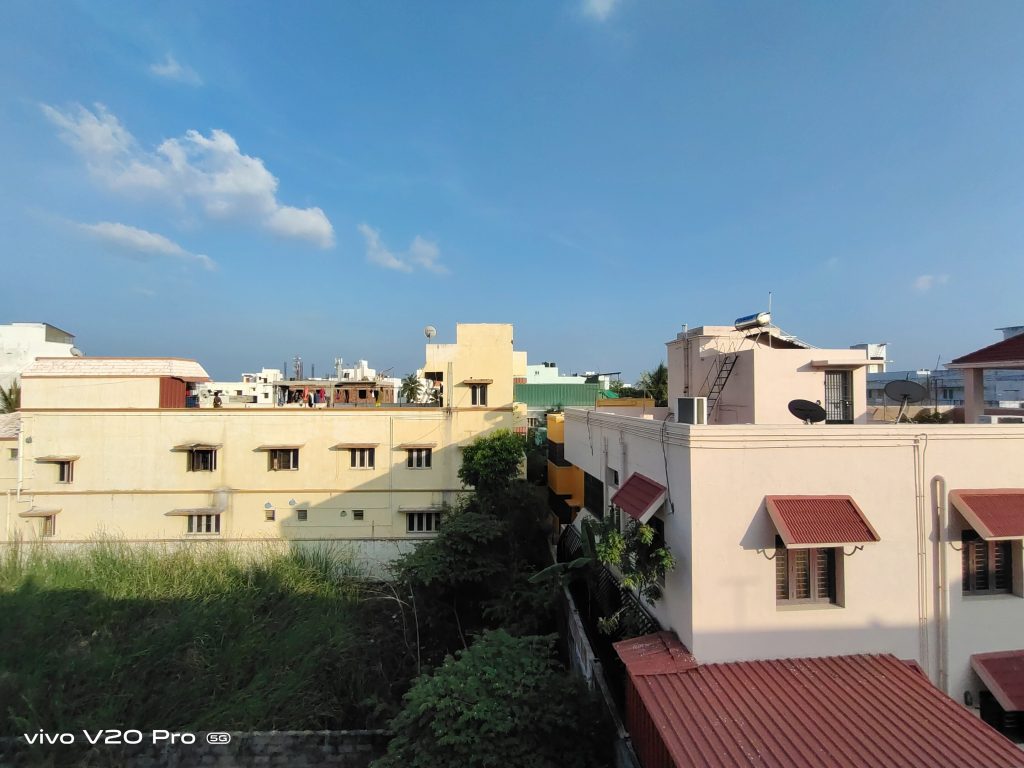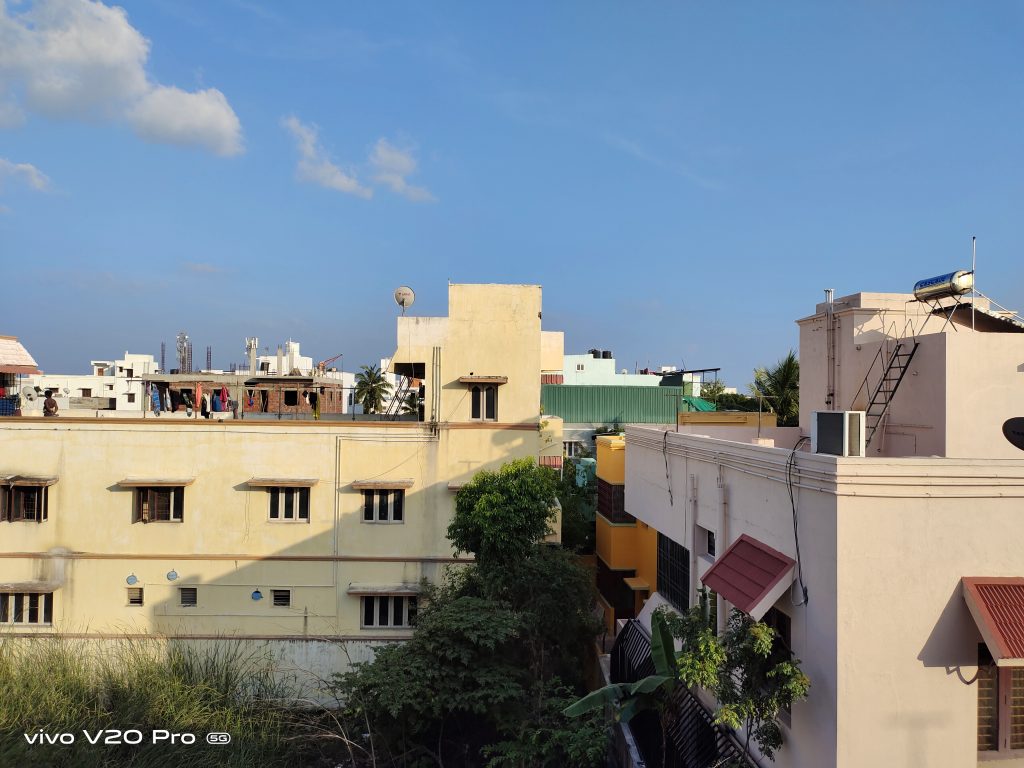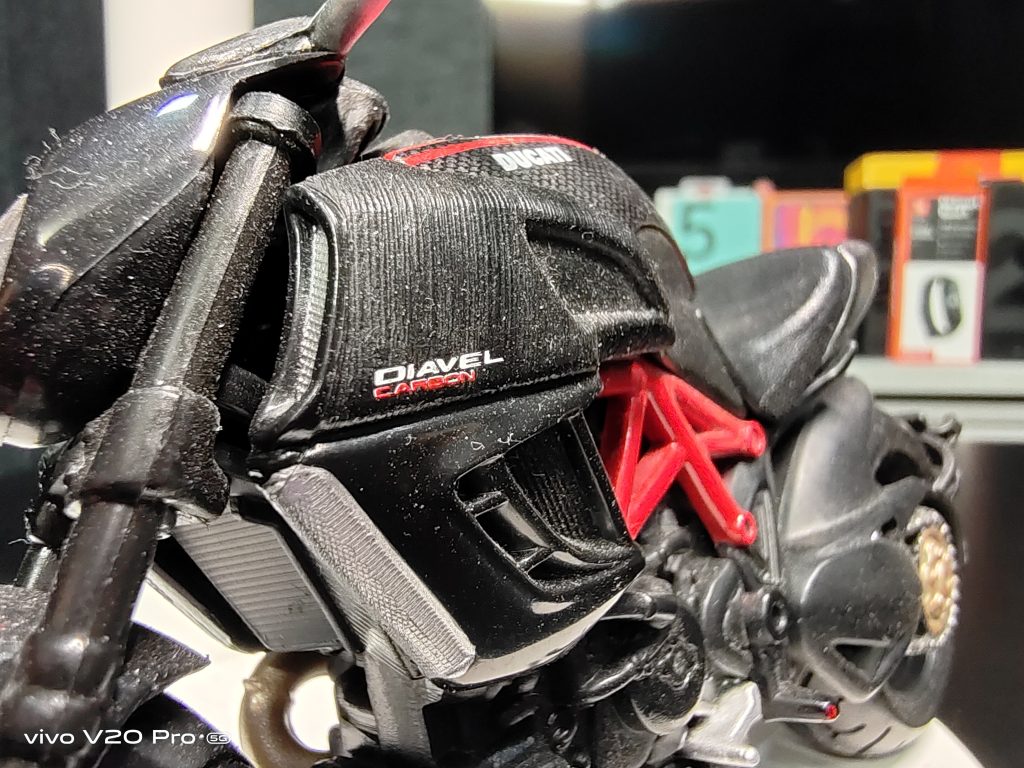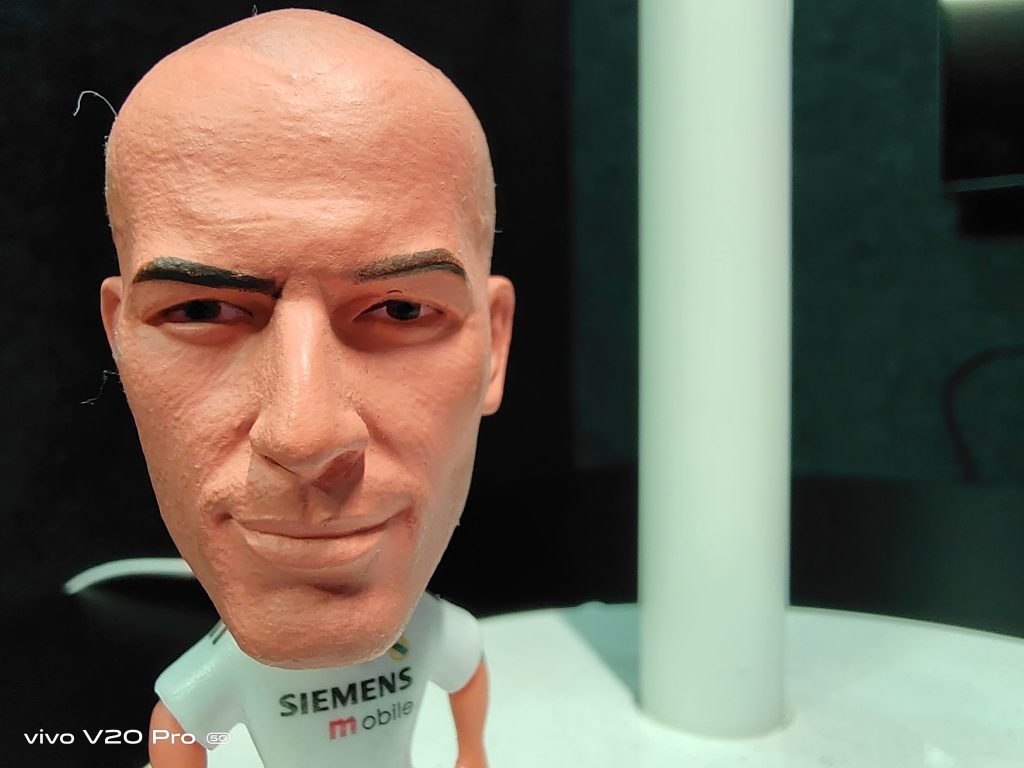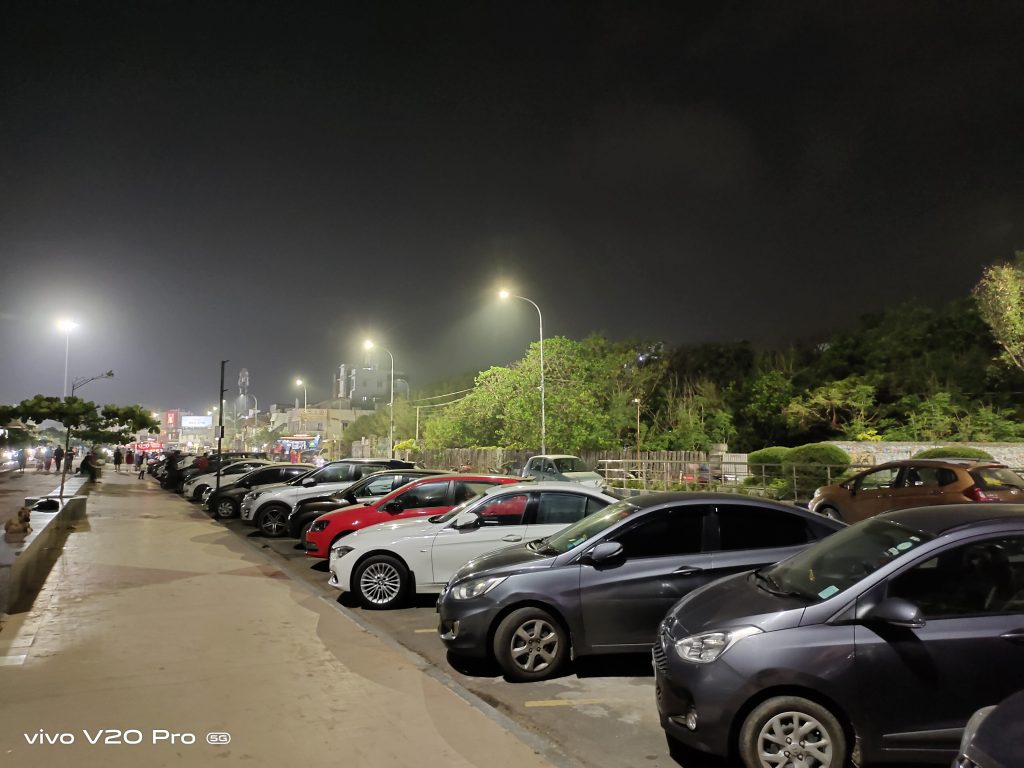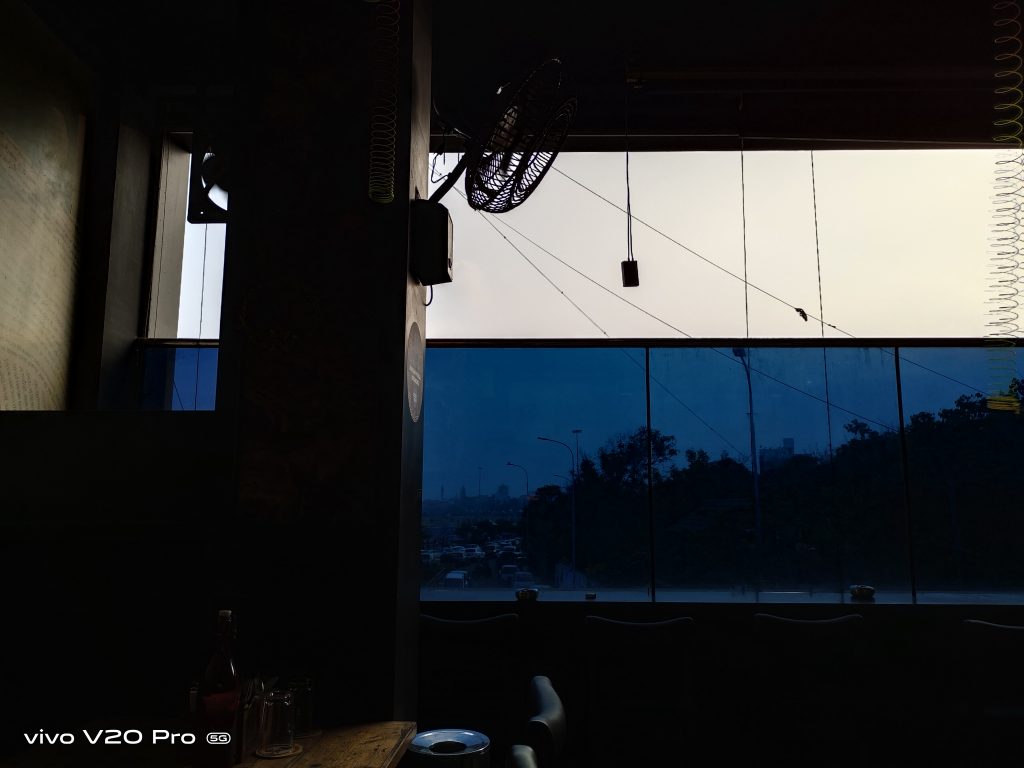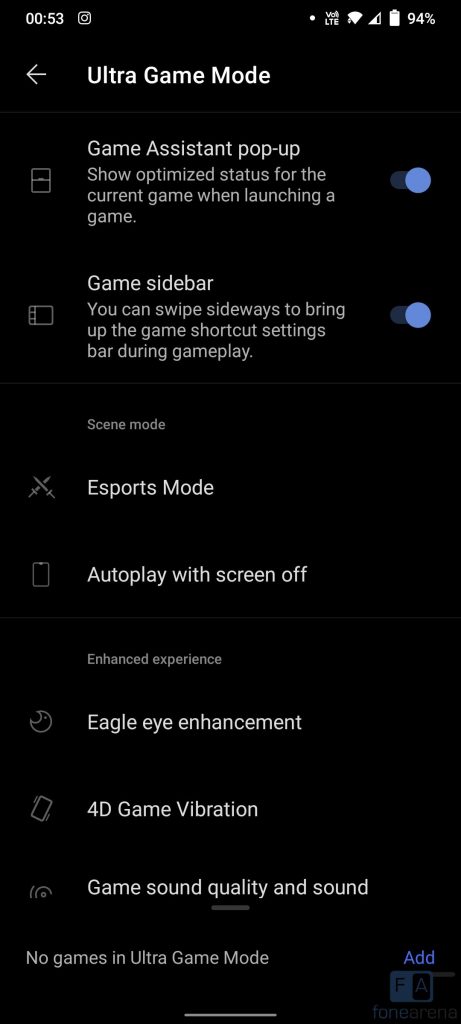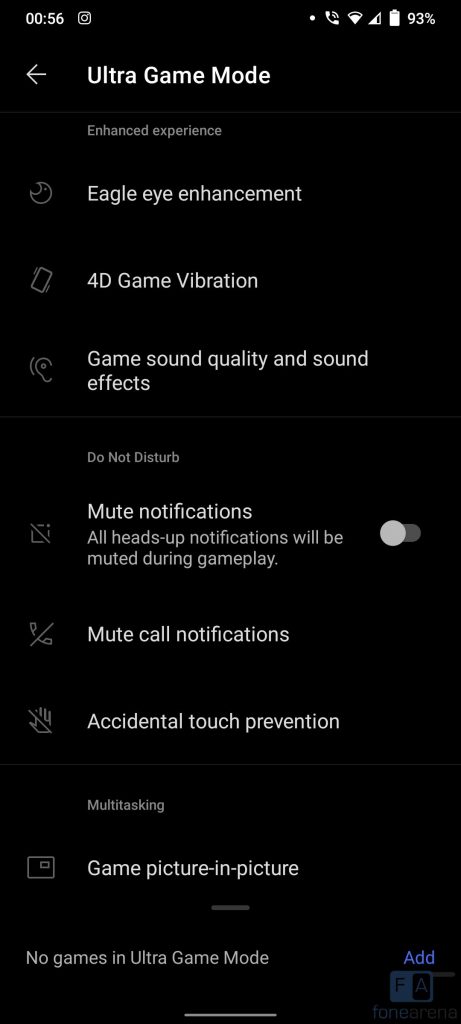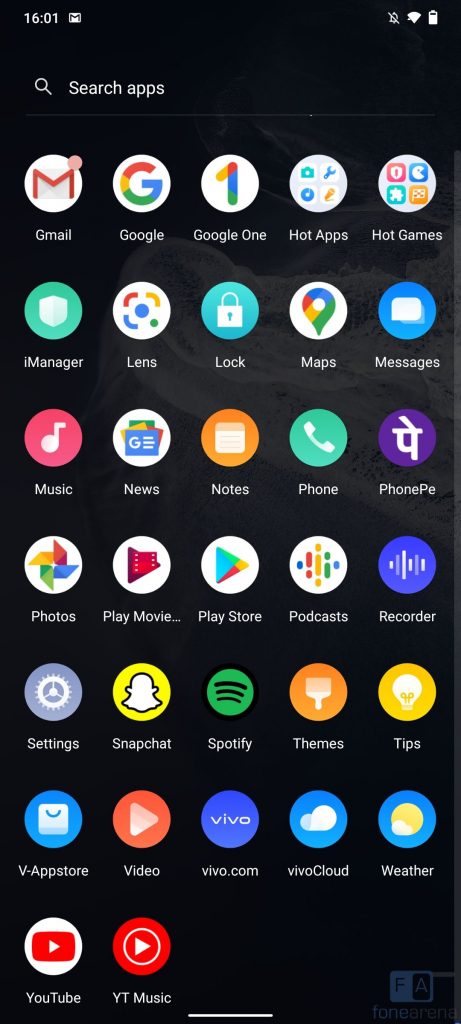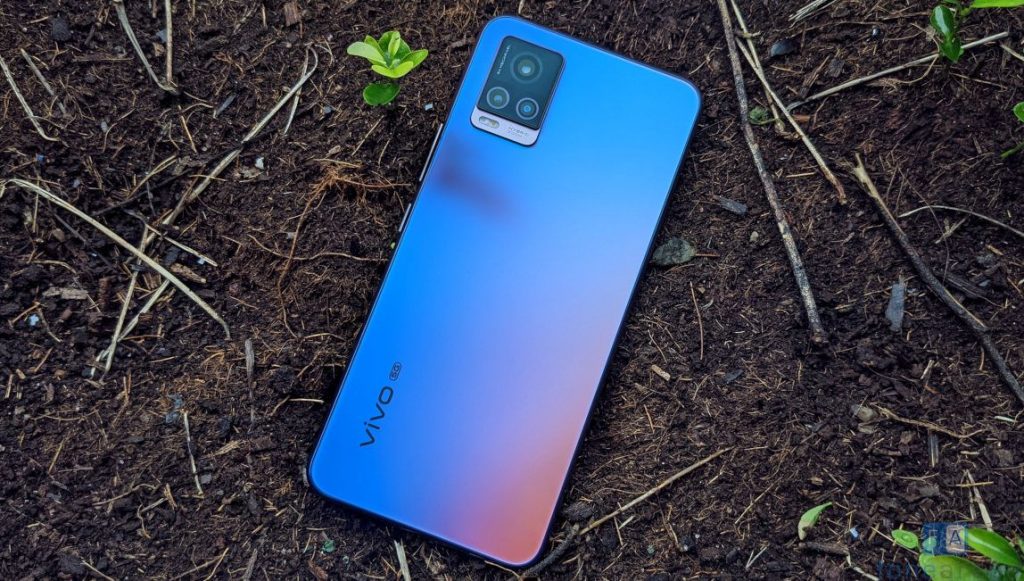
The Indian mid-range market is highly competitive, with a lot of great offerings from Samsung, OnePlus, OPPO, and Vivo. The Vivo V20 Pro is one among the many smartphones, found at the top of this market segment with a price tag of Rs. 29,990. It features beautiful design, it is powered by the Qualcomm Snapdragon 765G, and has a robust camera setup. Facing tough competition from smartphones like the OnePlus Nord, etc., can the V20 Pro justify its higher price? Read on in our review.
Box Contents
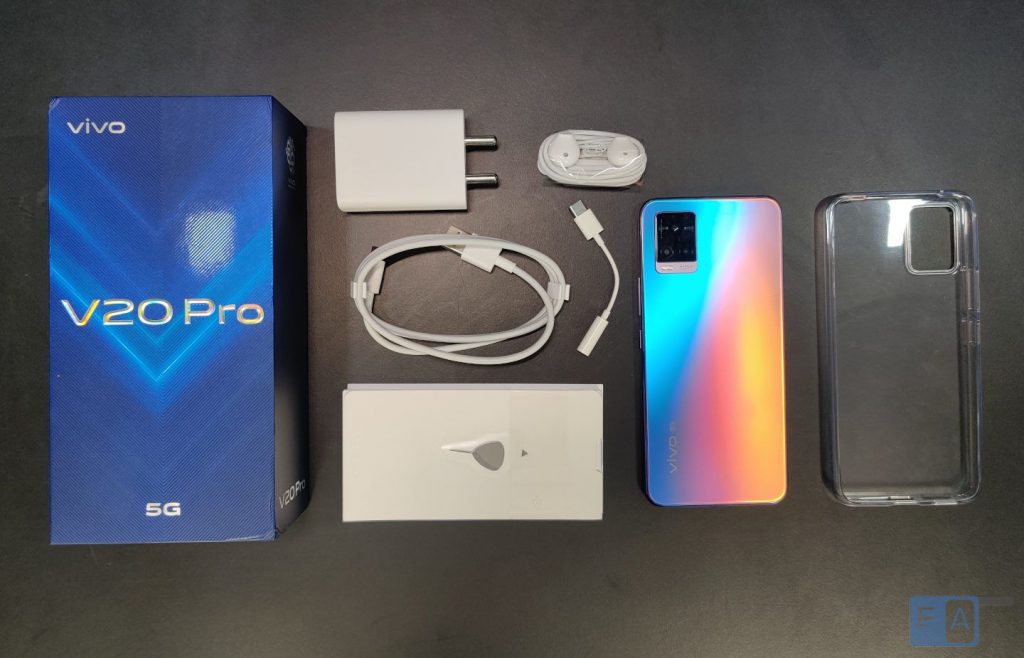
- Vivo V20 Pro (8GB + 128GB) in Sunset Melody colour
- 2-Pin 33W FlashCharge 2.0 wall adaptor
- USB Type-A to Type-C cable
- Earphones
- USB Type-C to 3.5mm jack adaptor
- Protective case
- SIM Eject Tool
- Quick Guide and Warranty information
Display, Hardware and Design
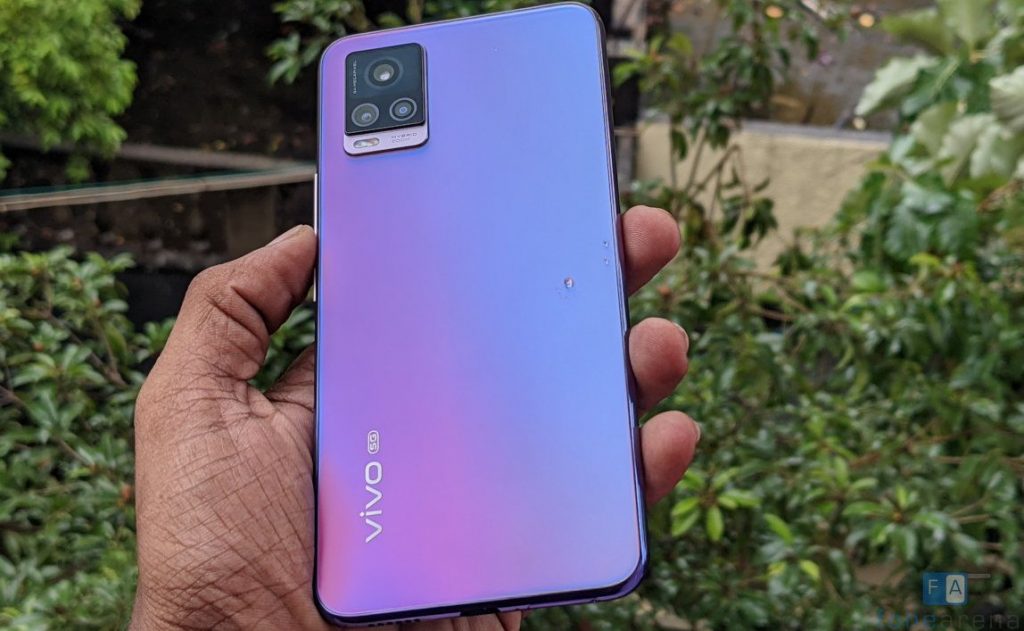
The design of the V20 Pro is easily one of its best characteristic features. Vivo has historically produced some very beautifully designed smartphones and the V20 Pro is definitely one of them. The phone is a glass sandwich surrounded by metal railings that feels wonderful to hold in the hand. Our model’s colour is the Sunset Melody and the rear glass has a very nice matte finish over a gorgeous mesh of colours that constantly changes in different lighting. One thing I noticed was that the curve between the side railings and the rear glass is a little sharper than I would like.
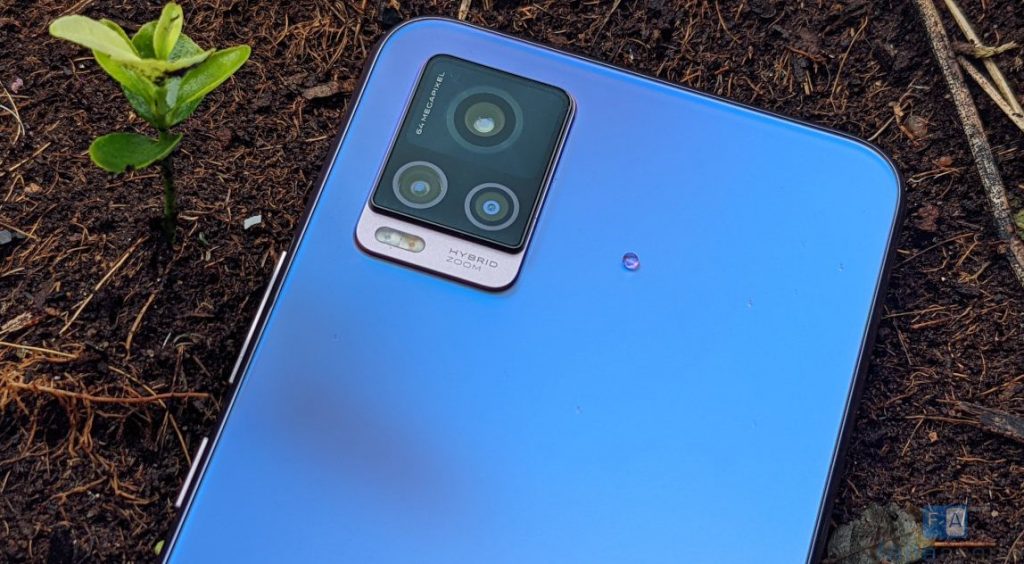
On the left corner of the smartphone’s rear is the camera module which houses the triple camera setup. The design of the module itself is quite similar to other Vivo smartphones, with two levels – one for the lenses and one for the rear dual flash.
On the right edge, there is the volume rocker and a ridged power button, and the left edge is completely empty. The bottom edge has the SIM card slot, a USB Type-C port, a microphone and a speaker grill, and the top edge has another microphone.
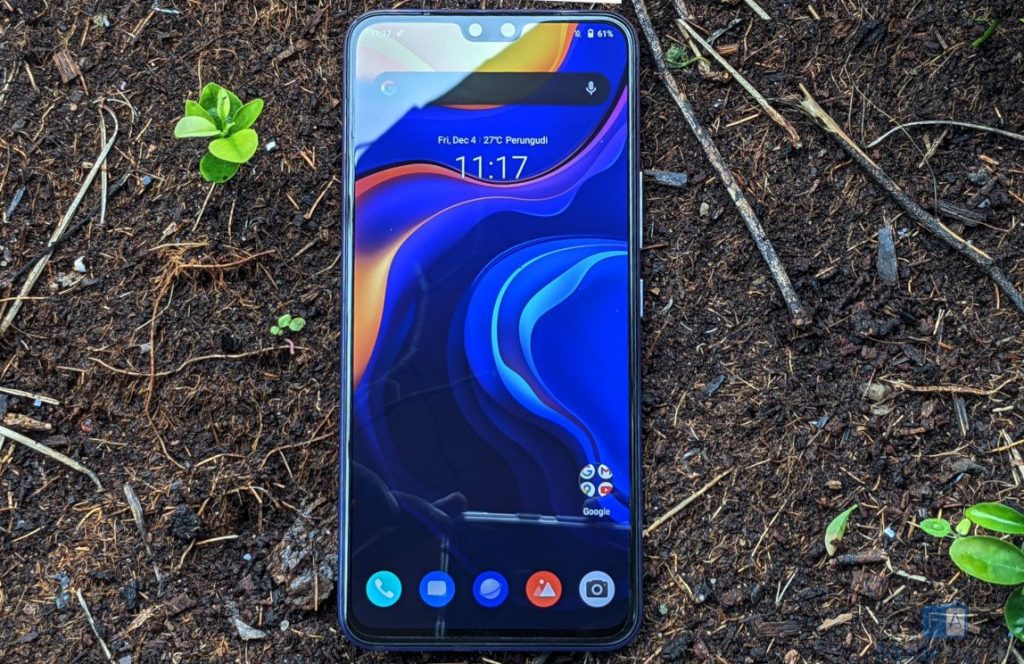
The display is another strong point for the V20 Pro. It is a 6.44-inch touch AMOLED panel with a resolution of 2400×1080 pixels. The panel is made by Samsung, and it is a very good one. Colours are vivid with good contrast, blacks are inky deep and sunlight visibility is not an issue at all. The pixel density comes out to about 408ppi which is plenty sharp for media consumption. The device is HDR10+ certified, which means HDR content on Netflix, YouTube and Amazon Prime will play back at that quality.
The refresh rate of the panel is limited only to 60Hz, which puts the V20 Pro at a tough spot as its competitor – the OnePlus Nord does offer a 90Hz display. It isn’t a big deal for people who are still using 60Hz smartphones, but it might be noticeable for those who already use high-refresh rate displays.
Camera
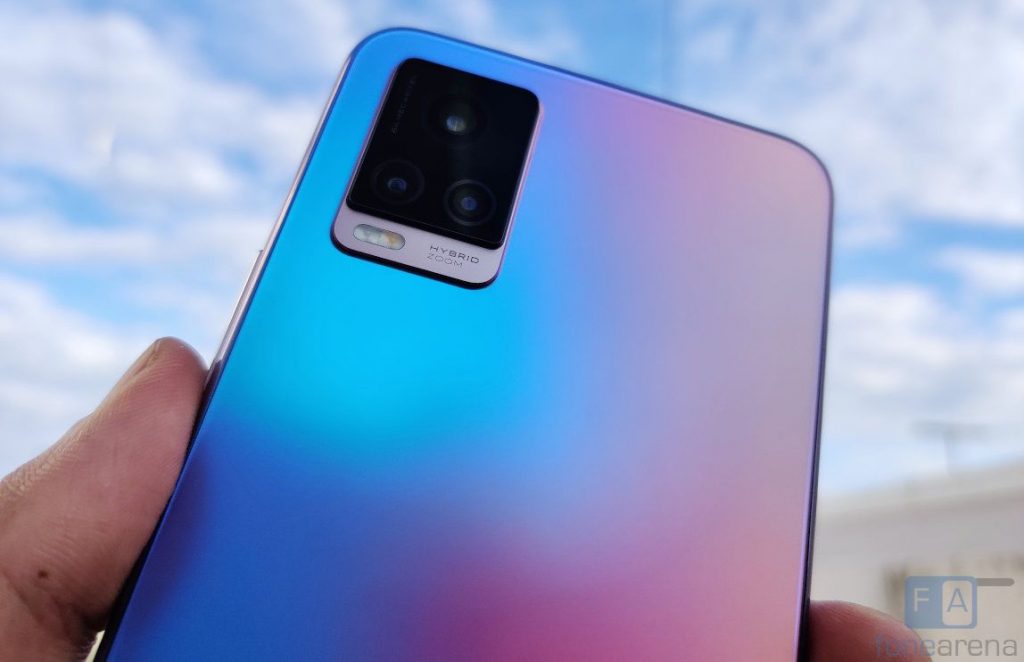
The V20 Pro has a triple rear camera setup that consists of a 64MP primary sensor with f/1.89 aperture, a 8MP wide-angle camera that can also function as macro camera and a 2MP mono with f/2.4 aperture. In the front are dual cameras, one being a 44MP primary sensor with f/2.0 aperture and an 8MP ultra-wide camera.
I really liked the camera setup on the V20 Pro and the photos it captures. The primary sensor shoots out 16MP photos by default and there is a mode to shoot at the full 64MP resolution. In good lighting conditions, the V20 Pro shoots some pretty good photos. They are vivid, sharp with good contrast, and the colours and white balance are mostly accurate. The camera outputs some really impressive HDR shots too.
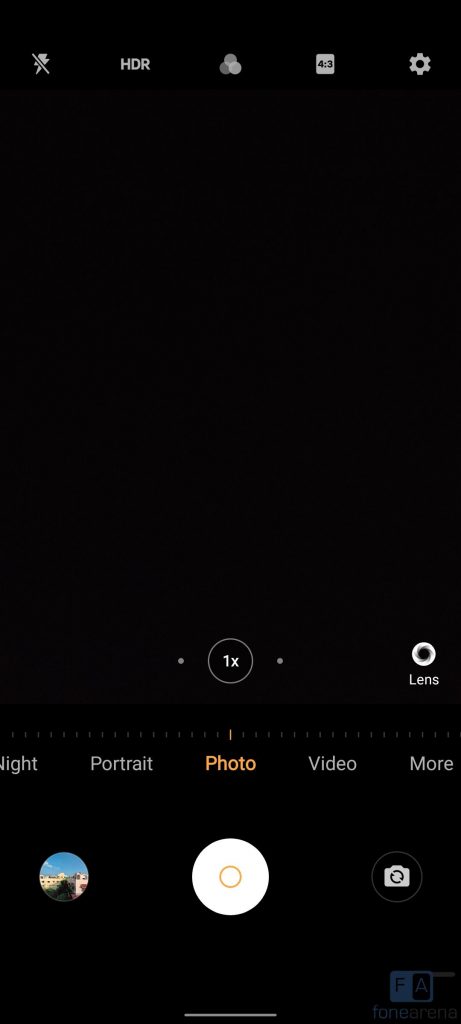
In more challenging situations, the Vivo V20 Pro can sometimes really shine. In low light situations, the camera is able to maintain an impressive amount of dynamic range and capture a good amount of detail. Only in extreme low light situations does the V20 Pro suffer. Portraits are another strong point for the V20 Pro, with nice clean borders for the bokeh effect.
The 8MP ultra-wide camera does a good job of providing a different perspective for capturing a moment, and I have no complaints about the quality of the photos it outputs. The ultra-wide camera also functions as a macro lens, which can be activated by pressing the Super Macro lens setting in the camera. The results are great, with a lot of detail and sharpness, and they are far better than nearly all other smartphones that have a dedicated 2MP or 5MP macro camera. The cameras also support taking RAW photos, which is perfect if you like to edit your photos later.
The third lens is mostly a gimmick; it is a 2MP mono camera whose function is to help apply creative filters to the captured photograph. I almost never used it, but it is there if you like it.
The primary 44MP front camera shoots some of the best selfies in my opinion. Faces have a lot of detail, and they aren’t overly smoothened. The camera has a feature called Aura Screen light that provides lighting when clicking in low-light by lighting up the entire screen. And if you want to capture a group selfie, the 8MP ultra-wide sensor is available.
It can shoot up videos at up to 4K 60fps from both lenses, and it is loaded with some helpful features such as eye-tracking autofocus and Ultra-stable. All of these features make the V20 Pro a great smartphone for vloggers and casual videographers alike.
Check out some camera samples below:
Software, UI and Apps
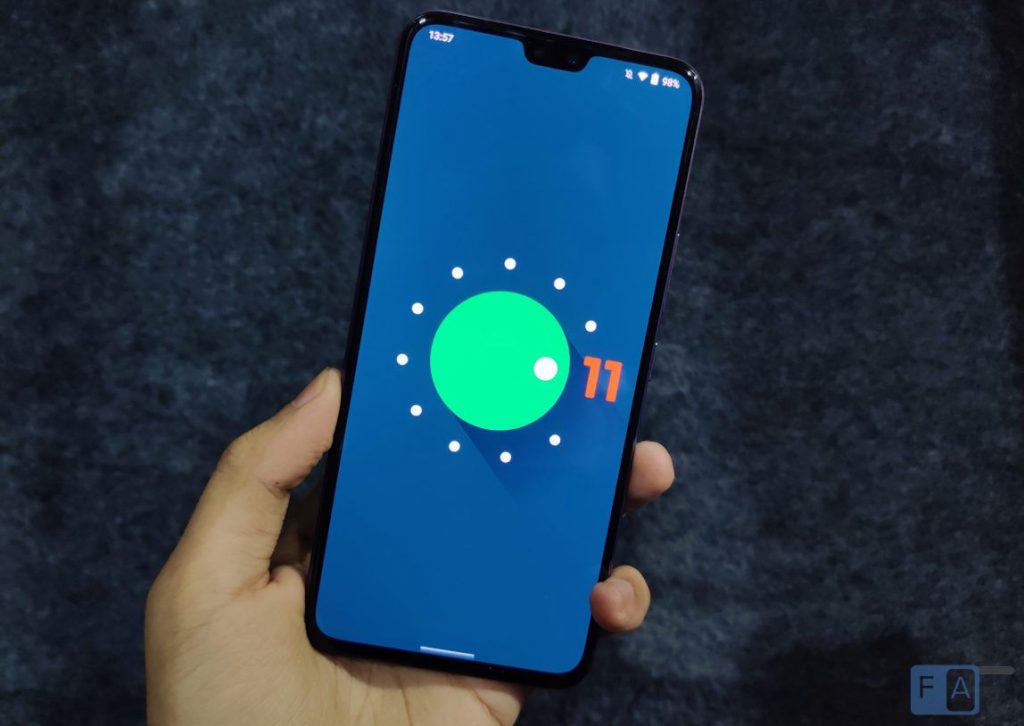
Vivo has been making some good decisions lately regarding their software experience. With its FunTouch OS 11, which is what the V20 Pro is running, Vivo was one among the first to bring Android 11 to its smartphones. Our V20 Pro has been updated to the December Android security patch, and we expect the January update to arrive soon.
Like most Android experiences from Chinese smartphone manufacturers, FunTouch OS 11 offers loads of customization options. System-level dark mode, the ability to change the system’s icons and colour scheme, Android 11 gestures, and a lot of animation effects choices for various aspects of the system.
There is an Always-On display, which comes with its own customization options such as changing the clock design, colour, layout and more. You can even set a sort of live wallpaper based on the position of the sun, which I liked a lot.
For serious gamers, there is a feature in FunTouch OS 11 called Ultra Game Mode, which when contains loads of settings within that can improve the gaming experience. Notifications and incoming calls can be muted, the SoC can be set to the max performance and accidental touches can be prevented.
I found the system animations to be mostly smooth and largely glitch free. The phone did come with quite a few pre-installed apps, such as Daily Hunt, YT Music, Snapchat, Spotify, etc. Luckily they can be uninstalled easily so not too bad. There are no advertisements or any of those annoyances.
Also, with the pre-installed apps are two app store alternatives to the Google Play Store, namely the V-AppStore and Game Center, of which the latter is an app store purely for games.
Fingerprint sensor and Face unlock
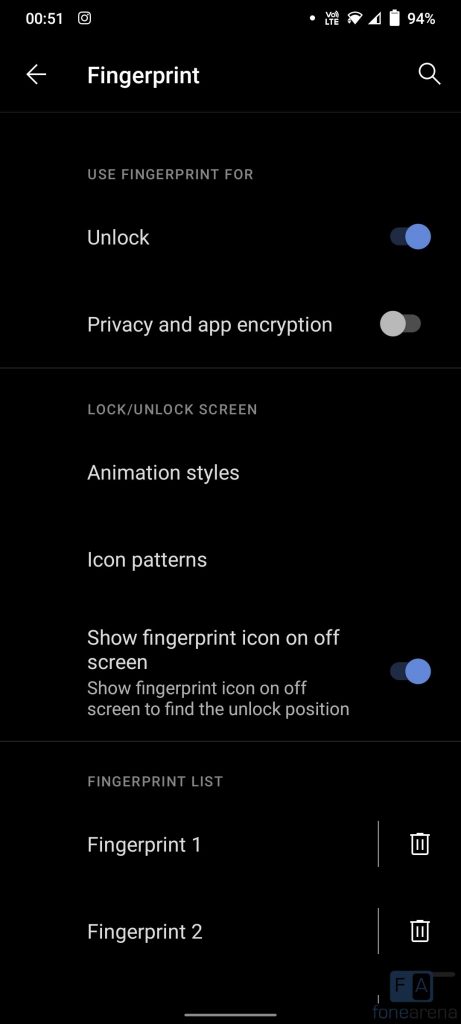
The Vivo V20 Pro supports both fingerprint and face unlock for biometric protection. It has an under-display fingerprint sensor and during my review, I found it to be accurate and reasonably fast. The position of the sensor itself is right where I would place my thumb, so it feels natural to unlock. Vivo allows you to add up to 5 fingerprints at a time.
The phone also supports Face Unlock, however, like most smartphones, it does not have dedicated depth sensors for authentication, instead it uses the front camera’s RGB sensor. Personally, I do not find the ease of using face unlock worth the security trade off, so I never use it.
Music player and Multimedia
There is a Music Player pre-installed with the phone, and it offers all the typical functions that you would expect from a music player. It does have a feature called Deep Space sound effects, which contains a number of presets and sound effects, along with an equalizer and presets for connected headphones.
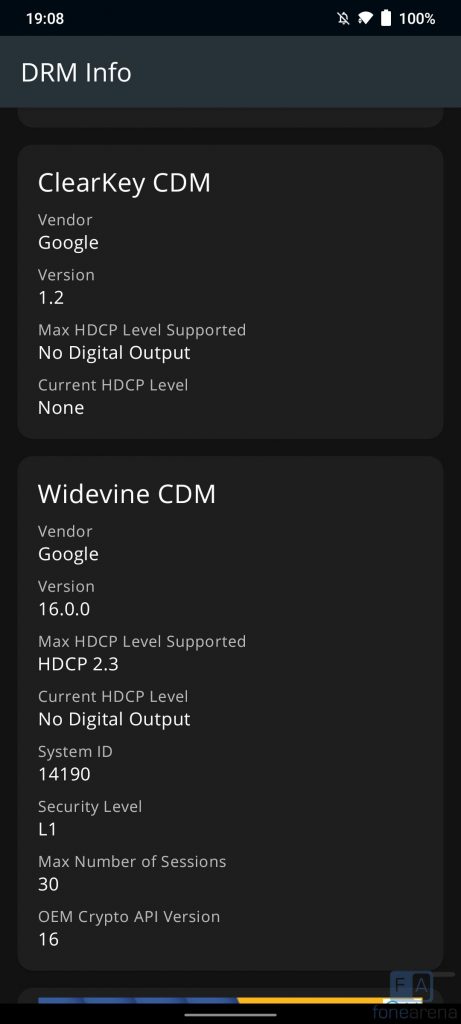
The smartphone is Widevine L1 certified, which means that the phone can play HDR content on Netflix and Amazon Prime. The smartphone has only a single mono speaker in the bottom, so I wouldn’t say that the speakerphone experience is particularly. The V20 Pro also does not have a headphone jack, however it does include a USB-C to 3.5mm adaptor in the box which is nice to have.
Dual SIM and Connectivity
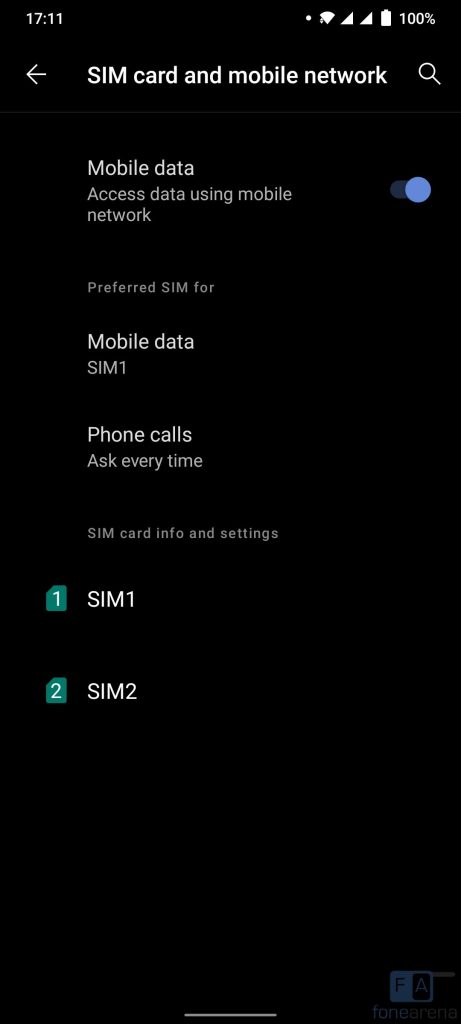
The phone does feature Dual SIM connectivity with support for Dual standby. Since the phone does feature a Snapdragon 765G chipset which has a 5G modem built-in. However, there are no active 5G networks in India at the moment. So this is more of a feature for the future.
The good news is that it does support 4G LTE networks and during my testing, it worked perfectly. There were no call drop issues with no abnormal signal strength issues either, and sound from the earpiece was comfortably loud. Other connectivity options include Bluetooth 5.1, Dual Band Wi-Fi 5, GPS, NFC and USB-OTG.
Performance and Benchmarks
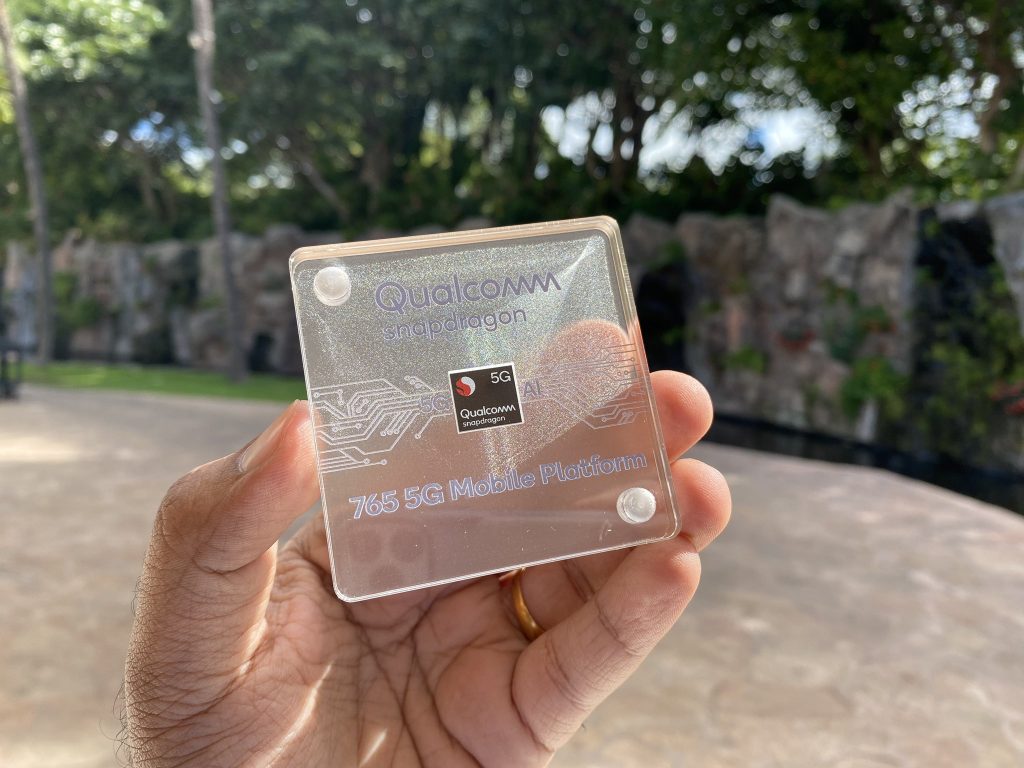
Like most smartphones in this price bracket, the Vivo V20 Pro is powered by the Snapdragon 756G SoC, coupled with 8GB of RAM and 128GB of storage. The SoC is built on Samsung’s 7nm process node, and it has 1 Kryo 475 Prime CPU clocked at 2.4GHz (765G), 1 Kryo 475 Performance CPU clocked at 2.2GHz and 6 Kryo 475 Efficiency CPUs clocked at up to 1.80GHz. The SoC also features the Adreno 620 GPU and the Snapdragon X52 5G modem-RF system built-in.
As expected, the smartphone is great for day-to-day use. Navigating the system was smooth and animations throughout the UI had no hitches. Apps open more or less quickly, and they stay open in RAM for a reasonable amount of time. The Snapdragon 765G is quite similar to the flagship 865 SoC, so the Vivo V20 Pro’s good performance shouldn’t come as a surprise.
Where you might notice a drop in performance is probably in the graphics department. For lighter titles, the V20 Pro has no problems at all, however, for heavier 3D titles, you can notice drops in frame rates now and then at high graphic settings. The V20 Pro thankfully does not heat up too much during extended sessions which is a good sign. Check out the benchmark scores below.

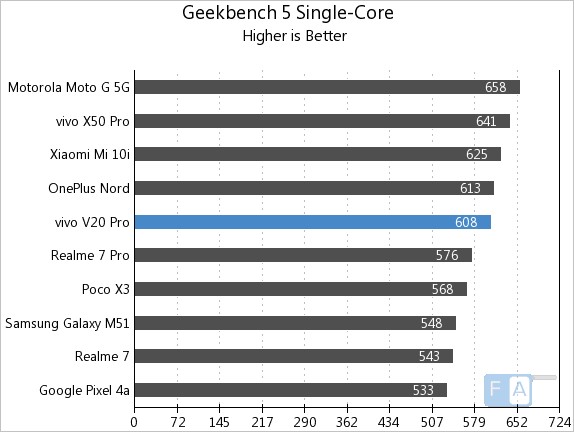
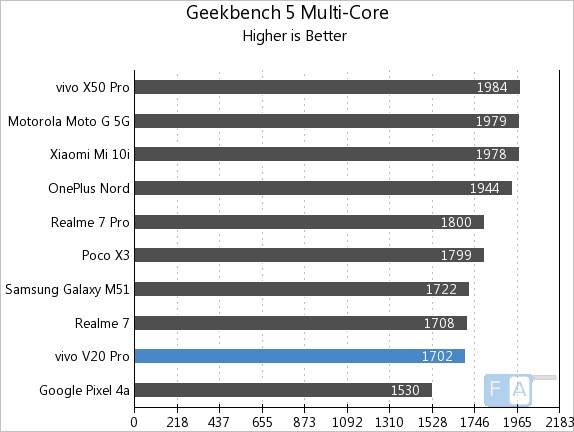
Battery Life
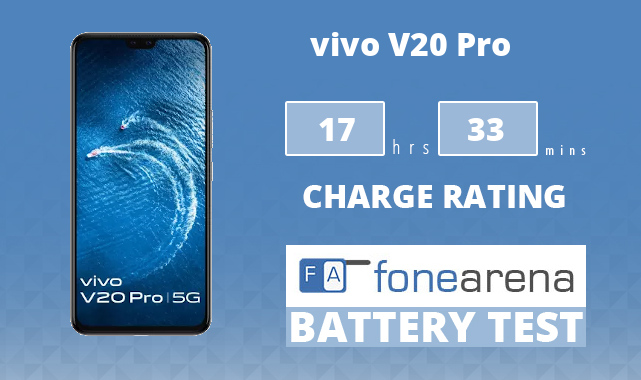
Battery life on the V20 Pro is also another positive point, with its reasonably sized 4000mAh cell. I was able to comfortably get through a full day with medium to heavy usage, with lots of screen on time. I do have to point out that this battery performance was observed on 4G LTE, and it might be different once 5G networks come into play.
It achieve a One Charge Rating of 17 hours and 33 minutes which is good for a phone with a 4000mAh battery. It supports Vivo’s 33W FlashCharge 2.0 which comes in the box itself. The phone can go from 0-100% in about 55 minutes, which is always a great feature to have when you need a quick charge.
Conclusion
The Vivo V20 Pro is a solid mid-range smartphone, offering good specs and performance in a device that has a beautiful design. Vivo made good choices in the camera department and the display is great for media consumption. It does not have a high refresh rate display like the OnePlus Nord, but I am fine with trading it for better cameras. The phone has a strong battery life, and it can charge super quickly. Overall, the V20 Pro is one of the best smartphones in the mid-range market segment and I do not have a problem recommending it.
Availability
Priced at Rs. 29990, it is available from Amazon.in, Flipkart as well as vivo online store and offline stores across India.
Pros
- Excellent camera performance
- Beautiful design
- Future proof with 5G support
- Good system performance
- Long battery life with quick charging
Cons
- Lack of high refresh rate display
- No headphone jack
- 2MP mono rear camera is a gimmick

